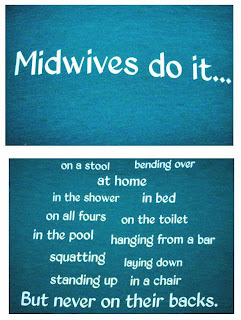
Too much of what we are told to do as parents is driven by fear - and by mass marketing campaigns. Advertisers pummel us with messages about the benefits of drinking milk and pediatricians advise us to "switch over" by age one. Scientists - and advertisers - invoke fear to encourage parents to follow the mandatory vaccination schedule and to put their children "safely" to bed in their cribs. And this time of year it's all about sunscreen. Not putting sunscreen on your child might elicit gasps of horror from the experts, not to mention other parents. But what we don't talk enough about is the actual safety of all the creams and sprays we chase our children around with to be sure they don't get burned.
Thanks to the Environmental Working Group (EWG), discovering the truth about sunscreen safety just got easier. EWG's 2010 Sunscreen Guide exposes the good, the bad, and the ugly about the industry and their products. Shockingly, 92 percent of the sunscreens reviewed by EWG's experts were found to either be lacking in their claims of protection against skin damage or contain potential "hormone-disrupting chemicals." So before you lather up at your next beach excursion, BBQ, or outdoor playdate, let's take a look at sun safety.
For starters, EWG points out that sunscreen alone does not protect you from sun damage. Hats, sunglasses, shirts and, of course, some shade, are all important ways to shield yourself from overexposure. And then comes the sunscreen. EWG's database helps guide you through 1,400 brands to help make a conscious choice. Many of these brands contain harmful ingredients, such as oxybenzone or Vitamin A (retinyl palmitate), the latter of which may actually hasten cancer cell growth on the skin. The jury is still out about whether or not sunscreen actually prevents skin cancer or sun damage at all, so how to proceed is a choice we all have to make individually. Growing research on the importance of Vitamin D also suggests that our excessive use of sunscreen may actually be detrimental to our health.
Yet overexposure to sun and subsequent sunburn are neither healthy nor fun. Finding a decent sunscreen can be done, once you understand the validity of SPF claims and the benefits and risks of ingredients. Start with reading EWG's 9 Surprising Truths and then head over to find your sunscreen in their database. Be sure to check out their Hall of Shame. Keep in mind that this is big business and the market is driven by demand. When parents work with advocacy groups such as EWG and vote with their dollars, companies will be forced to take notice. Shop responsibily and make informed choices.
Still have questions? Then join us for a Twitter Party on Tuesday, June 29th at 10 PM EST at #holisticmoms with EWG Senior Analyst Sonya Lunder to learn more! Haven't been to a Twitter Party yet? Visit our website here to get started. They are easy, fun, and packed with great information!
Thanks to the Environmental Working Group (EWG), discovering the truth about sunscreen safety just got easier. EWG's 2010 Sunscreen Guide exposes the good, the bad, and the ugly about the industry and their products. Shockingly, 92 percent of the sunscreens reviewed by EWG's experts were found to either be lacking in their claims of protection against skin damage or contain potential "hormone-disrupting chemicals." So before you lather up at your next beach excursion, BBQ, or outdoor playdate, let's take a look at sun safety.
For starters, EWG points out that sunscreen alone does not protect you from sun damage. Hats, sunglasses, shirts and, of course, some shade, are all important ways to shield yourself from overexposure. And then comes the sunscreen. EWG's database helps guide you through 1,400 brands to help make a conscious choice. Many of these brands contain harmful ingredients, such as oxybenzone or Vitamin A (retinyl palmitate), the latter of which may actually hasten cancer cell growth on the skin. The jury is still out about whether or not sunscreen actually prevents skin cancer or sun damage at all, so how to proceed is a choice we all have to make individually. Growing research on the importance of Vitamin D also suggests that our excessive use of sunscreen may actually be detrimental to our health.
Yet overexposure to sun and subsequent sunburn are neither healthy nor fun. Finding a decent sunscreen can be done, once you understand the validity of SPF claims and the benefits and risks of ingredients. Start with reading EWG's 9 Surprising Truths and then head over to find your sunscreen in their database. Be sure to check out their Hall of Shame. Keep in mind that this is big business and the market is driven by demand. When parents work with advocacy groups such as EWG and vote with their dollars, companies will be forced to take notice. Shop responsibily and make informed choices.
Still have questions? Then join us for a Twitter Party on Tuesday, June 29th at 10 PM EST at #holisticmoms with EWG Senior Analyst Sonya Lunder to learn more! Haven't been to a Twitter Party yet? Visit our website here to get started. They are easy, fun, and packed with great information!




